Serving features
You should start by preparing a room for receiving guests:
- Ventilate... Open the windows and let in some fresh air to make everyone feel comfortable.
- Arrange the chairs... Prepare a seat for each person so that unpleasant incidents do not happen during the feast. Do not sit anyone on corners - all guests should be comfortable.
- Lay the tablecloth... In some cases, you can do without it, but textiles are an easy way to create the right mood.
In the photo, the setting of a rectangular elongated table
Before moving on to serving, appreciate the occasion: Everyday lunch or dinner does not require a lot of dishes and decorations on the table. It is enough to correctly evaluate the menu, put only the necessary bowls, glasses, cutlery.
With a festive table setting the number of elements is increasing: a snack bar, a pie plate must be served, dessert utensils are added, several glasses for drinks are placed.
On holidays, it will not be superfluous to add decor: original napkins, bouquets, textile tracks, candle compositions.
Serving rules tables practically do not depend on the form, with the only difference: dishes should be duplicated on a long rectangular tabletopso that everyone can reach them. And on a compact round table, it is enough to put one copy at a time.
Decorative details on a round or square table are placed in the center, on a rectangular, oval - along the center line parallel to the long side.
In the photo, everyday morning table setting
How to arrange the plates?
After the tablecloth is laid and the room is completely ready, they begin to set the table. The first step is to arrange the plates.
- A serving plate is placed directly on a tablecloth or napkin - it is intended for decoration. Properly served, this part of the table serves as a stand for the rest of the cups. It should be placed in front of each seat, 2 cm from the edge of the table.
- The next one is chosen according to the first course - a soup bowl or a flat snack bar. It is placed on the table on top of the serving one.
- On the left, diagonally, at a distance of about 10 cm from the main one, put a pie bowl - for bread or pastries, on top of which a butter knife should be placed.
Important nuances:
- The dishes should be taken from the same set or chosen in such a way that the details fit together.
- During lunch or dinner, you should change the bowls to clean and more suitable at the moment (for the first course, second course, appetizers, dessert).
- The serving room always remains in place, a new one is put on it.
- For a family dinner, it is permissible to put two plates at once on the serving plate: flat, then soup.
Features of the layout of cutlery
Next, we lay out forks, knives, spoons - if you follow all the classic rules for table setting, this stage causes major difficulties.Indeed, in the setting of a large table at courtyards, separate appliances are used for almost everything: cheese, fish, meat, desserts. All knives and forks look different and are placed in a strict sequence.
But when gathering friends or loved ones at home, you just need to choose the right side and lay out the main elements.
The main regulations:
- the knives should be placed on the right, with the blade inward (towards the plate);
- forks take place on the left side, prongs up;
- spoons to the right of the knives, "face" up.
An exception - dessert utensils. They are served immediately, but they are placed on the table not on the side, but behind the plate: first, the spoon with the spout up and to the left, then the fork - with the prongs up, to the right.
Important! The order is determined by the order in which the dishes are served. The first-served treats are the farthest. The closest are the cutlery for the last course.
According to traditional foundations some dishes are eaten by hand: devices do not provide for them. This includes game (quail, hazel grouse), ribs, wings, frog legs, crabs, crayfish, shrimps, lobsters.
In the photo there is a minimum of cutlery
How to put glasses and glasses?
The third step in the table setting sequence is drinking utensils. There are several variations of how the final picture will look:
- Glasses and glasses stand in one straight line to the right of the seated person from largest to smallest (from left to right).
- Vessels for liquids are placed on the right side in a semicircle. At the same time, the farthest one is for water (in the absence of a pie, you can move it to the left side), closer - for wine, glasses for strong alcohol, next to the plate - a cup on a saucer for hot drinks.
In the photo, a variant of the arrangement of glasses, glasses
According to one of the traditions, glasses are placed in the sequence of use - if the menu provides for a change of drinks, the farthest glass for the first one, then as it approaches.
Important! Dirty dishes are removed along with the plates, appliances, with the only exception - the water glass is always left.
The photo shows the correct arrangement of the dishes, including the champagne glass and dessert cutlery
Recommendations for napkin positioning
There are no strict rules for the choice and location of napkins, therefore table setting at home in this matter depends only on the imagination, taste, style of the hostess.
Main question - color selection... For strict official receptions, it is better to limit yourself to neutral textiles that are suitable for the interior of the kitchen, dining room (white, beige, gray). The color scheme of a warm family evening or a festive banquet can be brighter: napkins are used in accent monochromatic ones, or with drawings.
Has the meaning size of napkins: 35 * 35 cm is usually used for breakfast, for dinner or lunch - 40 * 40, 50 * 50 cm.
The last nuance - location... It is customary to cover in three ways:
- On the plate... Placed or placed on top of a flat diner.
- In a glass of water... The fabric is folded vertically and placed in a glass.
- Right side... Folds in half or into 4 parts, appliances lie on top.
Using napkins to decorate the table, choose one of 2 options:
- Do it yourself beautifully... Experienced housewives know at least 10 interesting patterns of textile origami for the table: lily, flower, boat, train, herringbone, artichoke, everest, tulip, horn.
- Collect a composition with a ring, flowers, plates... A simpler, but no less striking option.
Original ideas
Modern table setting, especially for an informal evening, does not imply following strict rules. Therefore, you can turn your attention to the decor and decorate the table, as well as the room so that it would be pleasant for both you and guests to be in it.
Lay a beautiful tablecloth, lay a bright path, pick up napkins to match, put flowers.
Advice! For a more aesthetic result, try to combine shades of tableware and decor. Example: serving a white table with blue glasses is complemented with blue napkins or a tablecloth with a blue print.
Beautiful table setting is a great way to set the mood for the evening even before dinner starts! They say that serving can improve the taste of a dish: why not take advantage of this bonus, because as it turns out, serving is not that difficult.

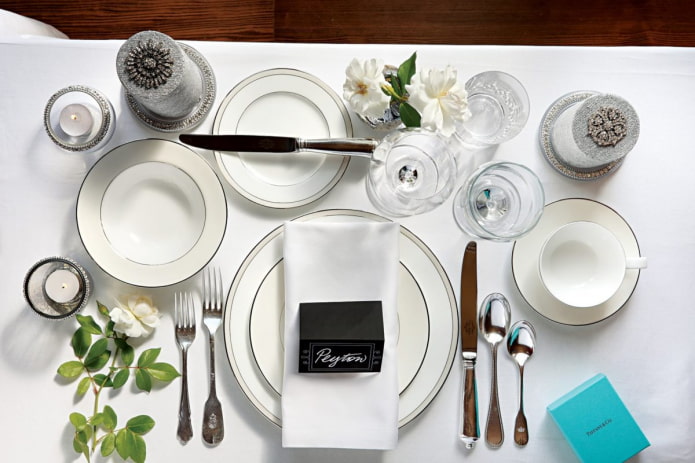
 10 practical tips for arranging a small kitchen in the country
10 practical tips for arranging a small kitchen in the country
 12 simple ideas for a small garden that will make it visually spacious
12 simple ideas for a small garden that will make it visually spacious
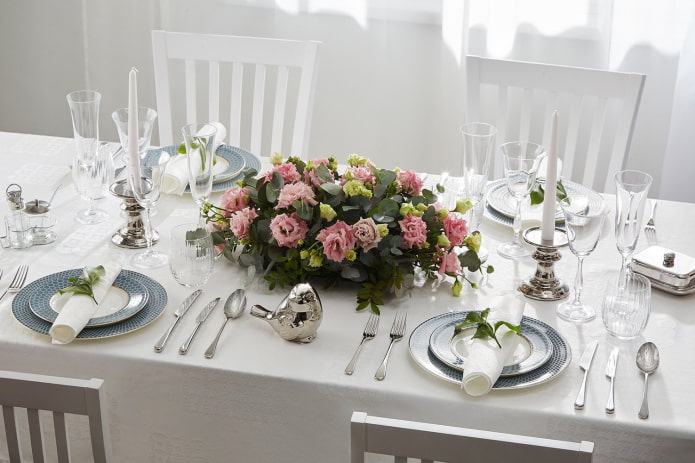
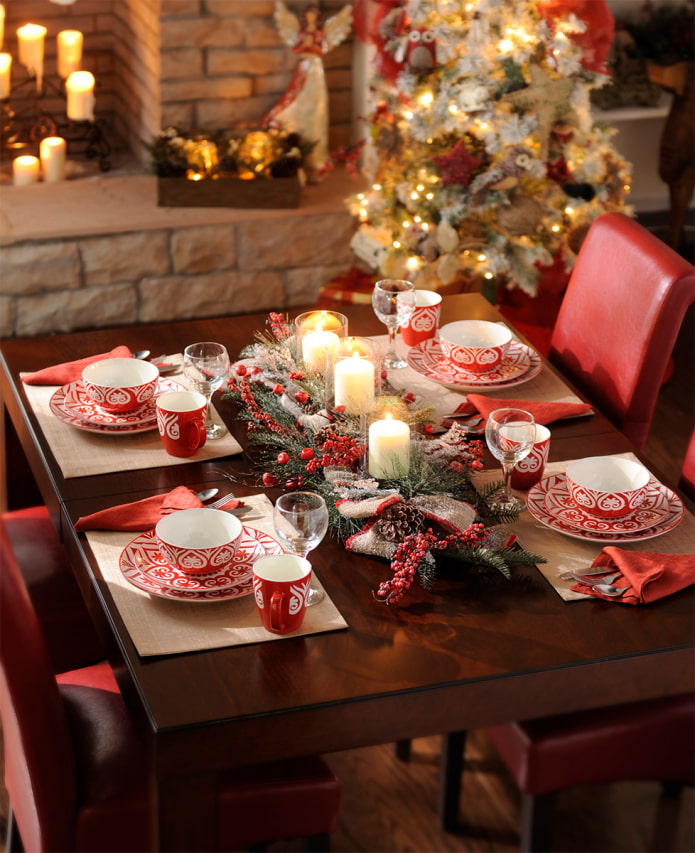
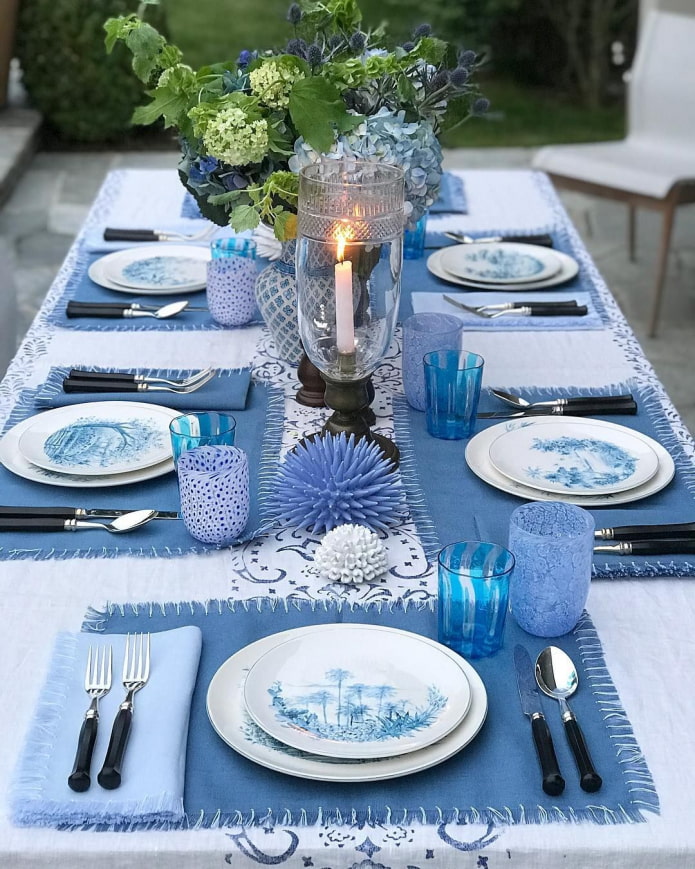
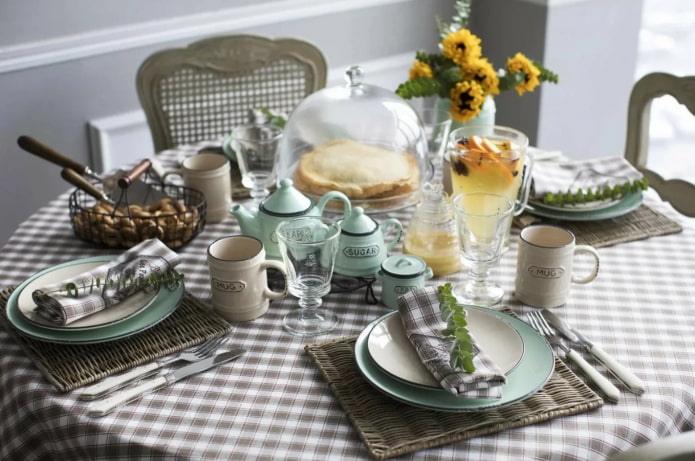
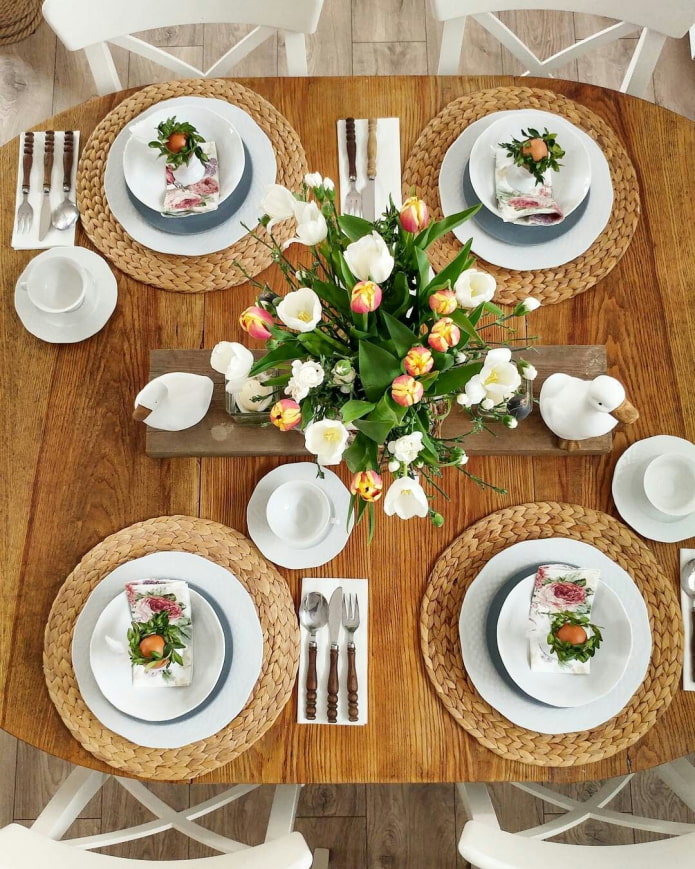

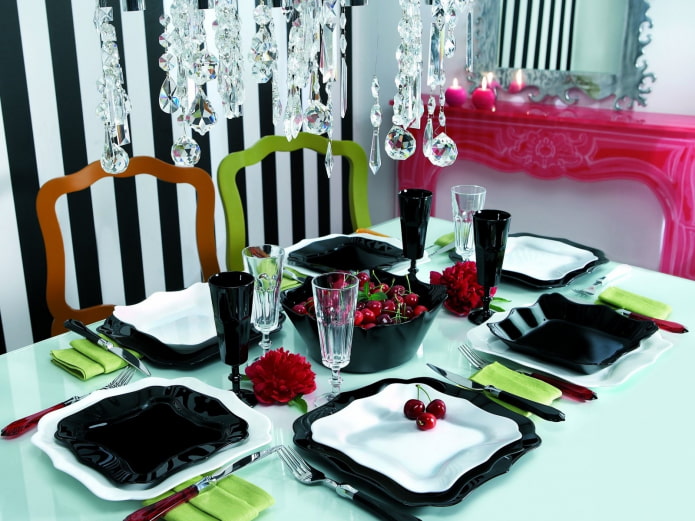

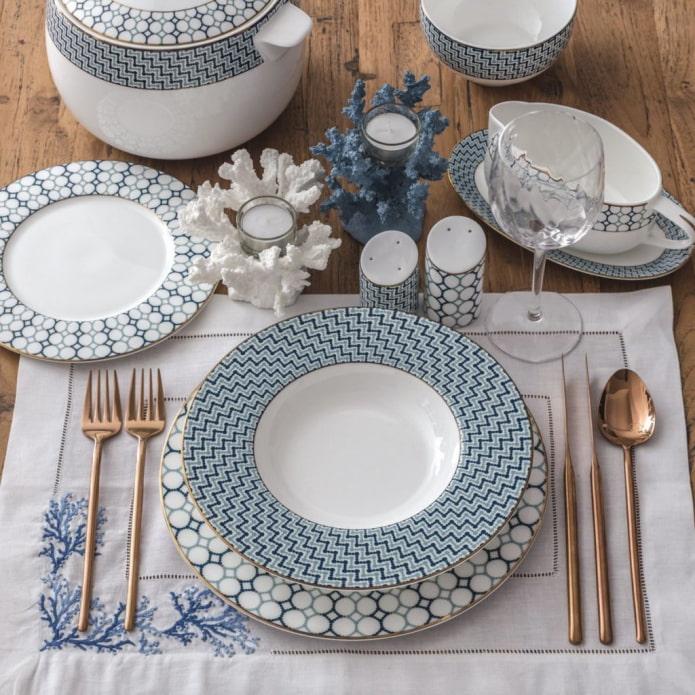
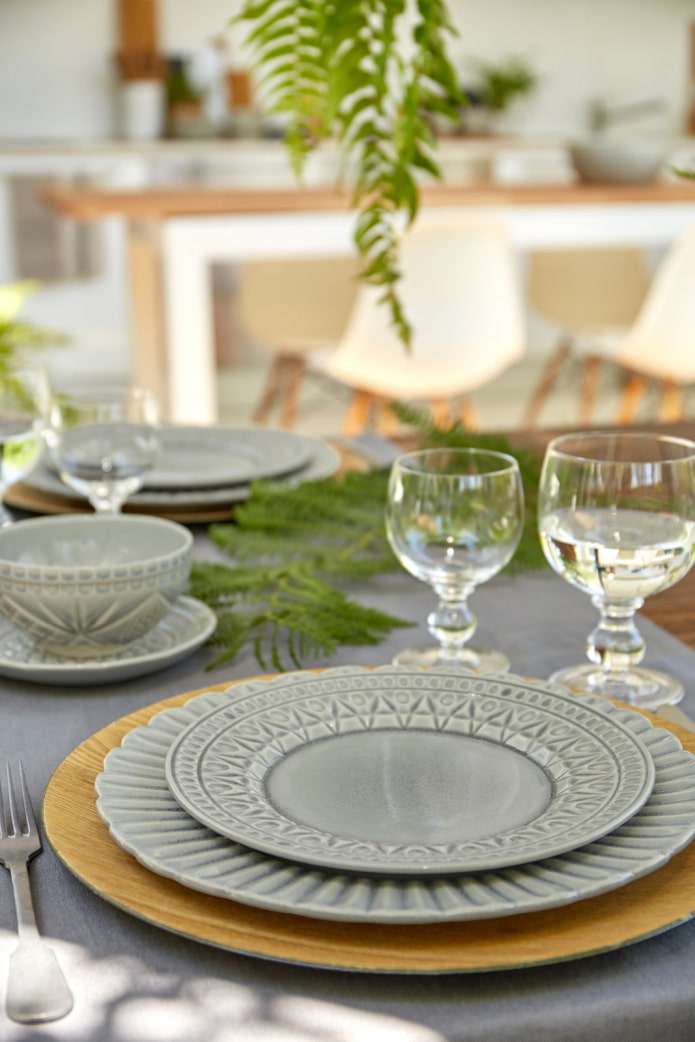


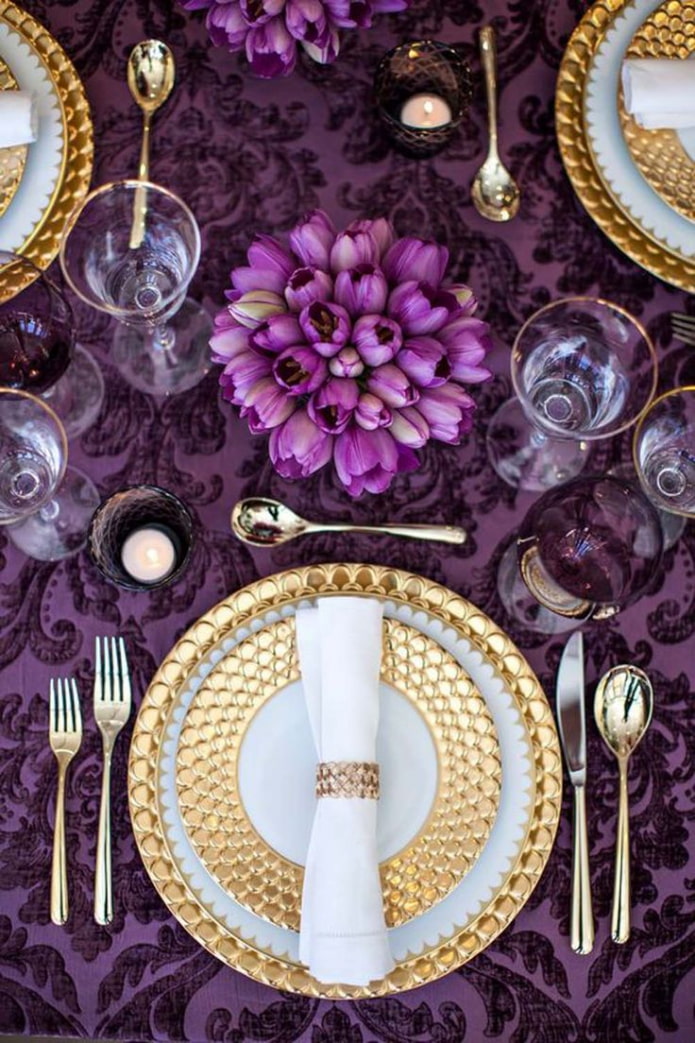
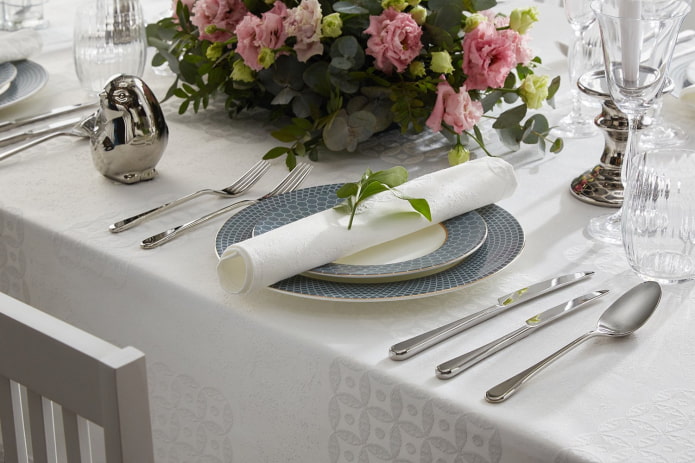
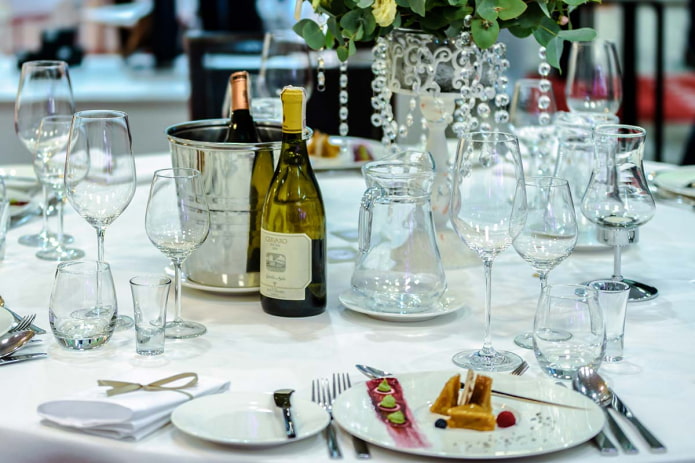
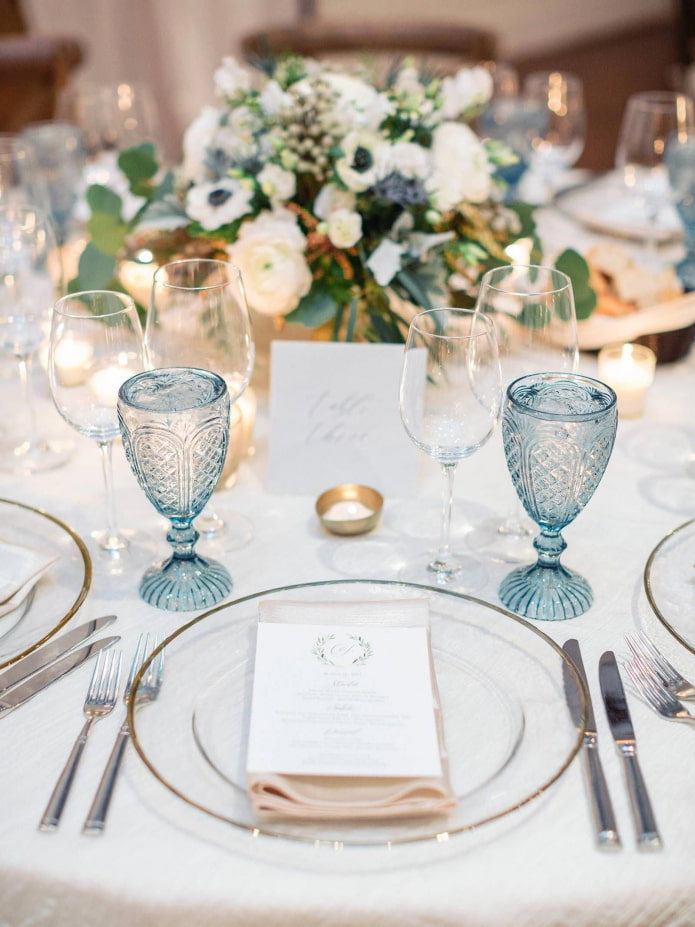
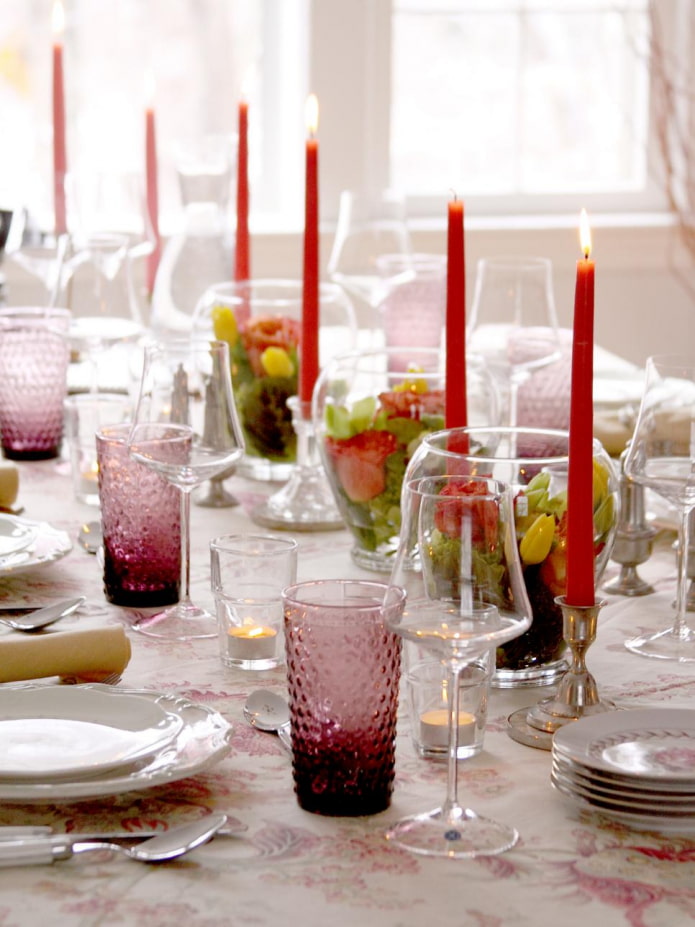
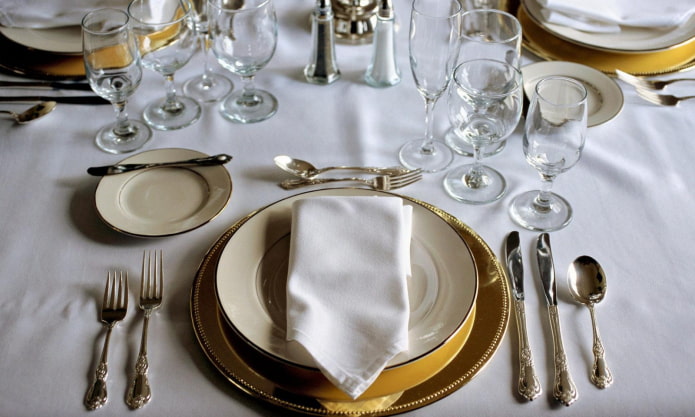
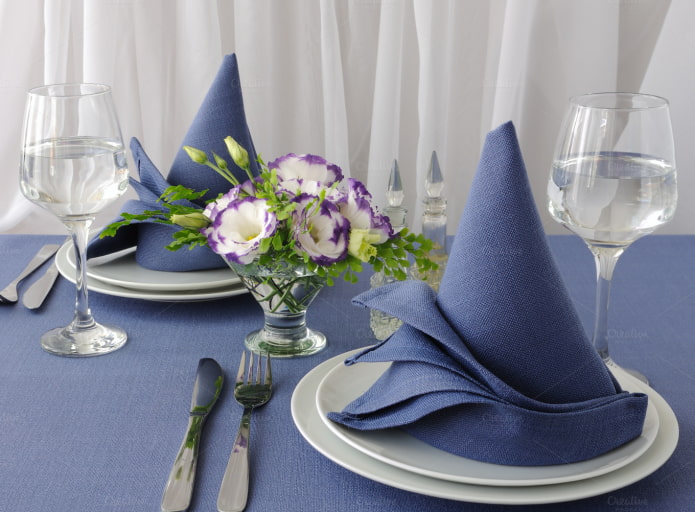

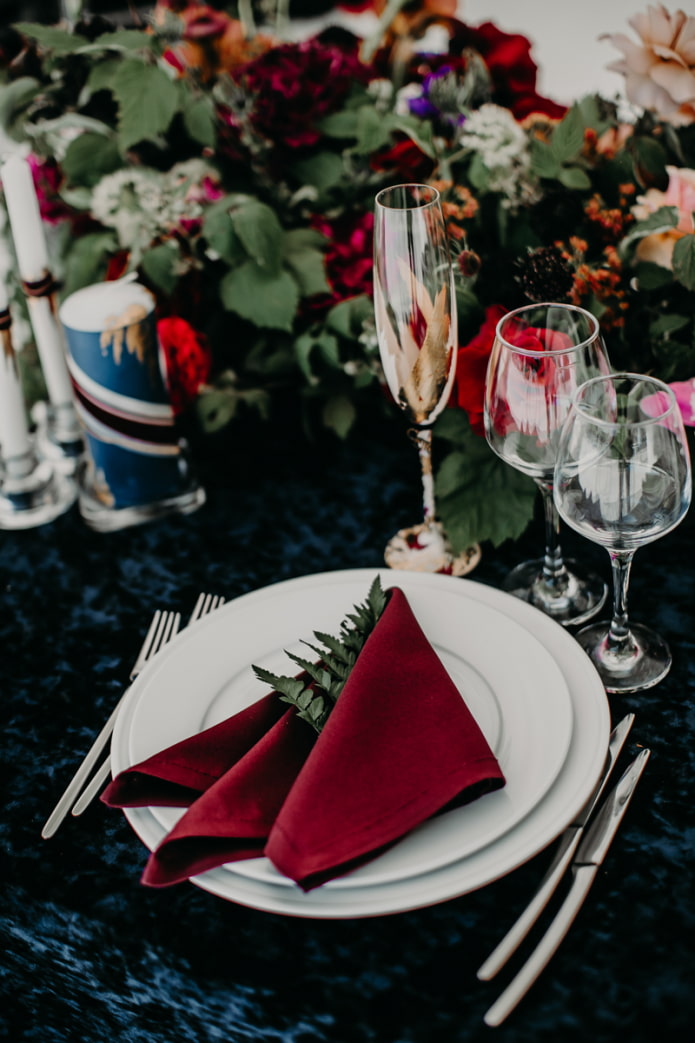


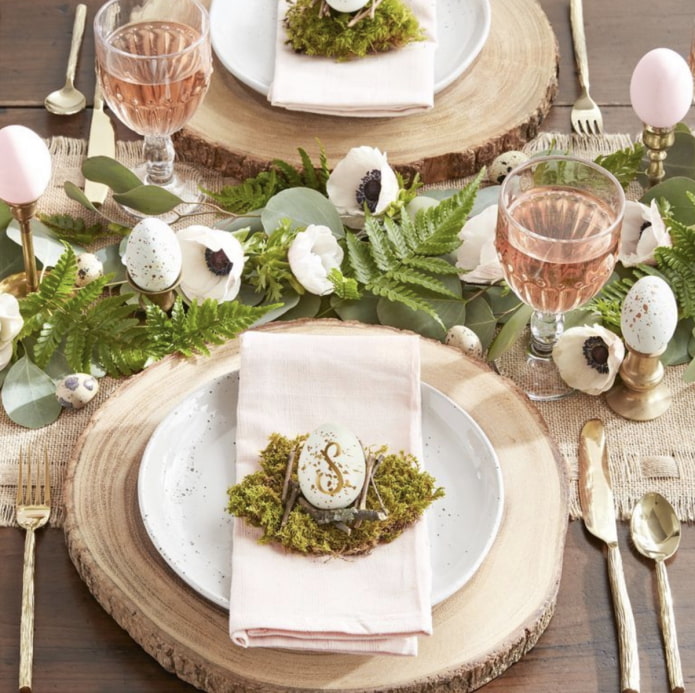
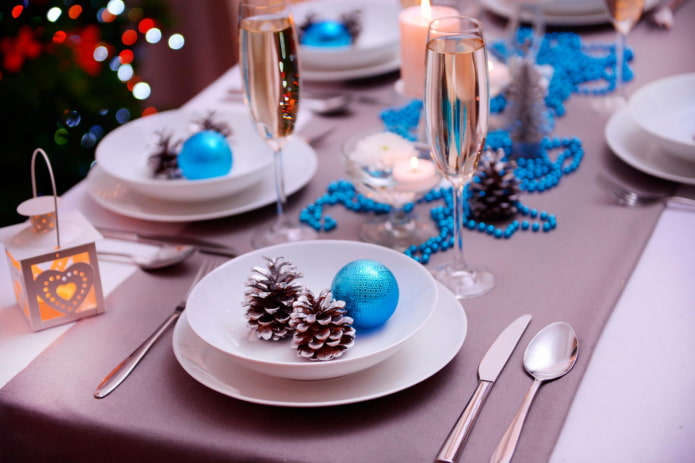
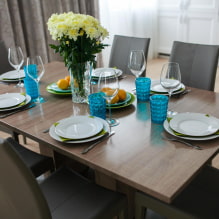
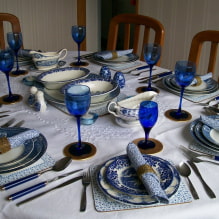
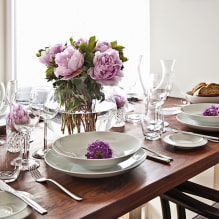
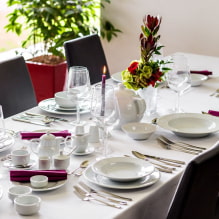
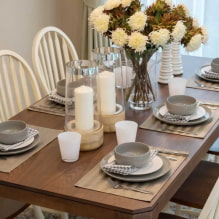
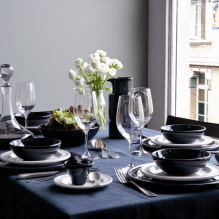
 How to choose the color of your kitchen sink?
How to choose the color of your kitchen sink? White kitchen set: features of choice, combination, 70 photos in the interior
White kitchen set: features of choice, combination, 70 photos in the interior Black set in the interior in the kitchen: design, choice of wallpaper, 90 photos
Black set in the interior in the kitchen: design, choice of wallpaper, 90 photos How to choose curtains for the kitchen and not regret it? - we understand all the nuances
How to choose curtains for the kitchen and not regret it? - we understand all the nuances Design of a white kitchen with a black countertop: 80 best ideas, photos in the interior
Design of a white kitchen with a black countertop: 80 best ideas, photos in the interior Kitchen design with green wallpaper: 55 modern photos in the interior
Kitchen design with green wallpaper: 55 modern photos in the interior